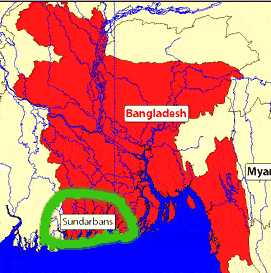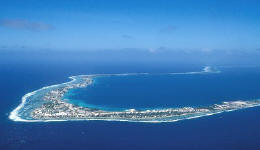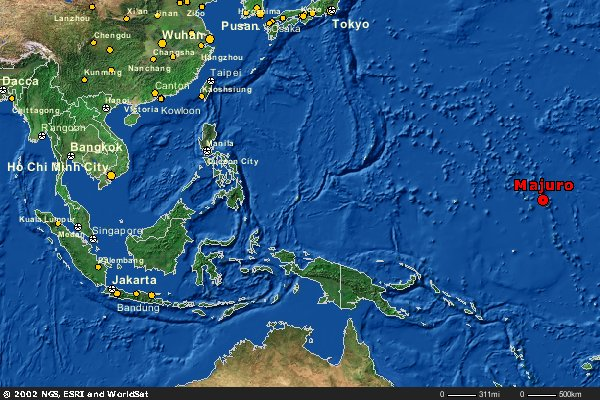CLIMATE
CHANGE
and
POPULATION DISPLACEMENT
Environmental
refugees may turn out to be the biggest global health challenge
presented by climate change.
Patz,
Kovats (2002). Hotspots in climate change and human health. BMJ
325:1094-1098.
About
100 million people around the world live within a meter of the
present-day sea level, Those 100 million people will need to
go somewhere.
CSIRO Marine Research senior principal research
scientist Steve Rintoul
Worse,
every meter of sea level rise causes an inland recession of around
100 meters (300 feet) and more erosion occurs with every storm.
As
sea level rises by up to a metre this century (the top of the
forecast range), as many as 30 million Bangladeshis could become
climate refugees. Many Bangladeshi families escaping
floods and droughts have already slipped over the Indian border to
swell the shanty towns of Delhi, Bombay and Calcutta. "The
problem is hidden at the moment but it will inevitably come to the
fore as climate change forces more and more people out of their
homes.
a n
inhabited island has disappeared beneath rising seas.
n
inhabited island has disappeared beneath rising seas.
Rising
seas, caused by global warming, have for the first time washed an
inhabited island off the face of the Earth. The obliteration of
Lohachara island, in India's part of the Sundarbans where the Ganges
and the Brahmaputra rivers empty into the Bay of Bengal, marks the
moment when one of the most apocalyptic predictions of
environmentalists and climate scientists has started coming true.
As
the seas continue to swell, they will swallow whole island nations,
from the Maldives to the Marshall Islands, inundate vast areas of
countries from Bangladesh to Egypt, and submerge parts of scores of
coastal cities.
http://www.conservationreport.com/2006/12/climate-change-disappearing-world.html
Two-thirds
of nearby populated island Ghoramara has also been permanently
inundated.
Refugees from the vanished Lohachara island and the
disappearing Ghoramara island have fled to Sagar, but this island has
already lost 7,500 acres of land to the sea. In all, a dozen islands,
home to 70,000 people, are in danger of being submerged by the rising
seas.
There
are at least 20 million environmental refugees worldwide, the group
says—more than those displaced by war and political repression
combined
http://news.nationalgeographic.com/news/2005/11/1118_051118_disaster_refugee.html A12_s2_1
DISPLACED
COMMUNITIES AND LAND LOSS REFUGEES
U rban
Flooding
rban
Flooding
Thirteen of the world’s fifteen
largest cities are on coastal plains. Many smaller cities, such as
Alexandria, Egypt’s ancient center of learning, also face a
severe risk of inundation with a 39-inch (1m) rise in sea level.
Parts
of San Jose and Long Beach, California, are about three feet below
sea level and New Orleans is about eight feet below sea level today.
Cities
at risk cover a wide range of economic circumstances, yet many will
require extensive infrastructure development to minimize the
potential impacts of flooding, particularly from storm surge.
http://www.koshland-science-museum.org/exhibitgcc/impacts03.jsp
D isappearing
Islands
isappearing
Islands
The Majuro Atoll in the
Pacific Marshall Islands is projected to lose 80% of its land with a
20-inch (0.5m) rise in sea level. Many of the islands will simply
disappear under the rising seas.
A
similar fate awaits other islands throughout the South Pacific and
Indian Oceans, including many in the Maldives and French Polynesia.

Coral
reefs, which protect many of these islands, will be submerged,
subjecting the local peoples to heightened storm surges and disrupted
coastal ecosystems. Tourism and local agriculture will be severely
challenged.
A12_s2_2
 n
inhabited island has disappeared beneath rising seas.
n
inhabited island has disappeared beneath rising seas.  rban
Flooding
rban
Flooding isappearing
Islands
isappearing
Islands